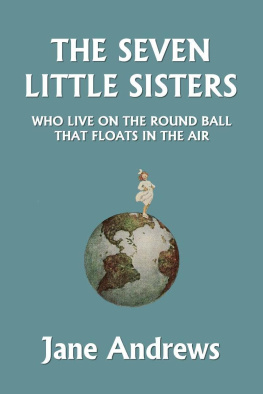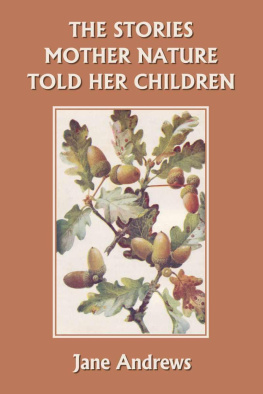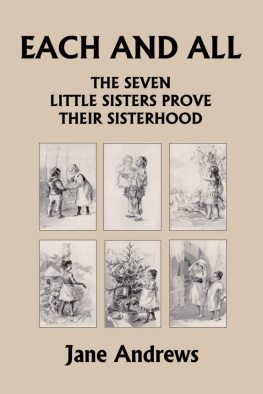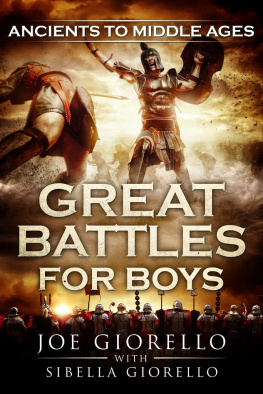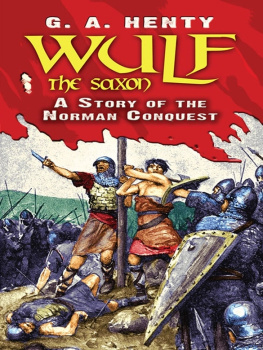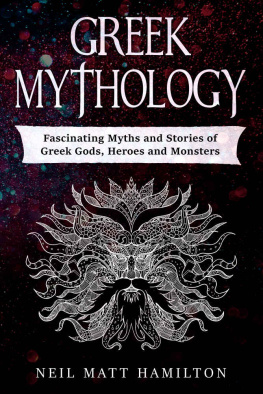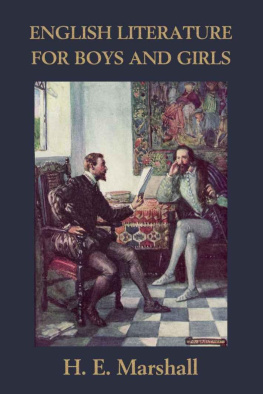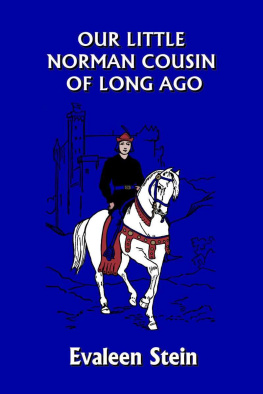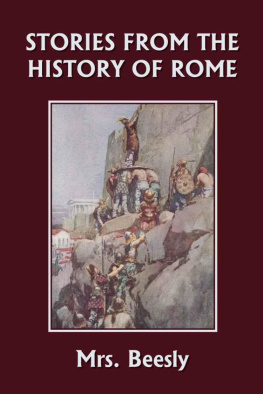Ten Boys Who Lived on the Road from Long Ago to Now
by
Jane Andrews
Yesterday's Classics
Chapel Hill, North Carolina
Cover and Arrangement 2010 Yesterday's Classics, LLC
All rights reserved. No part of this book may be reproduced or retransmitted in any form or by any means without the written permission of the publisher.
This edition, first published in 2010 by Yesterday's Classics, an imprint of Yesterday's Classics, LLC, is an unabridged republication of the work originally published by Ginn & Company in 1898. This title is available in a print edition (ISBN 978-1-59915-064-2).
Yesterday's Classics, LLC
PO Box 3418
Chapel Hill, NC 27515
Yesterday's Classics
Yesterday's Classics republishes classic books for children from the golden age of children's literature, the era from 1880 to 1920. Many of our titles are offered in high-quality paperback editions, with text cast in modern easy-to-read type for today's readers. The illustrations from the original volumes are included except in those few cases where the quality of the original images is too low to make their reproduction feasible. Unless specified otherwise, color illustrations in the original volumes are rendered in black and white in our print editions.
Jane Andrews' School
So many children and their teachers all over the country have become friends of my sister, Jane Andrews, through their interest in her books, that I thought it might give them pleasure to hear some account of the school which she taught for over twenty-five yearsthe pupils of which she had in mind in all her writing. This school was begun in an upper chamber in our old home in Newburyport, Massachusetts, where a distant glimpse of the ocean could be seen through a side window, and the roar of the breakers could be heard in the winter storms. The front windows of this room look out on a broad, quiet street, running along the ridge of a hill that slopes to the Merrimac river. High above the windows tower two great trees that shade the front of the house, an English linden and a horse-chestnut, each about eighty years old. Down the whole length of the side yard is a long row of purple lilacs; under their shade the school-children played in summer, and in winter built snow forts beneath their bare branches. Here they had fierce snowball battles, which Miss Andrews enjoyed from the school-room window. When the warm sun of the winter afternoon broke down the walls of the fort and destroyed the ammunition, she wove it into a play lesson. The sun with his lances of heat conquered the frost giants, and, in the disguise of invisible vapor, carried them as prisoners to his realm of the sky. These prisoners escape some day and return to earth as rain or snow.
The children who heard these lessons, so full of joyous play, never forgot the round of atmospheric changes. This is but one of the many ways in which everyday life was woven into a lesson. The wonderful workings of nature became vital truths to these children, and their eyes opened to the world around them. As the school increased in size, my sister, who had first started it as an experiment, realized what a delight it was becoming to her to enter into the lives of children, and that it meant for her years of teaching. She decided to fit up the upper chamber of our barn, a large airy room, for a school-room. And here she taught for many years, though she moved her school back into the house during the later years of her life. This barn opened into the same lilac-shaded yard that I have described, and the back and side windows overlooked an old-fashioned, terraced garden, shaded by peach and apple trees. Desks were built all round this room and chairs of all sizes and shapes put before them. At one side was a square soapstone stove, which could be used as an open fire, and overhead were the heavy beams bracing the roof, with the holes near their center, where our swing used to hang when we were children, and where the school-children, as I remember, at times had a swing which they used at recess. Near the middle of the room was Miss Andrews' table, and behind her a long blackboard, which almost always contained the illustration of some lesson. Over the west window, in the most prominent place in the room, was the guiding motto, "Self-Control," the gospel that Miss Andrews cared most to teach, the truth that no outside help is of any use to us, unless the forces within are held with a strong hand, and that we ourselves are the shapers of our own lives.
Each day, on the board, she wrote some motto of helpfulness, many of them pointed to this end; sometimes a verse of poetry, sometimes a quotation from the Bible, all having reference to every-day life. "He that ruleth his spirit is greater than he that taketh a city" was one of her favorites. Other mottoes were: "Whatever is brought upon thee, take cheerfully." "The bee is little among such as fly, but her fruit is first among sweet things." "First deserve and then desire." "Wisdom is better than weapons of war." "Behold how great a matter a little fire kindleth." "Weigh thy words in a balance and make a door and a bar for thy mouth." These mottoes and many more were brought into practical working every day. They were indelibly imprinted on the children's memories, not by study and repetition, but by talks of their meaning and interest in their application. Many a child has come joyously to her to tell of success in using one of these precepts, thus saving herself from doing wrong, and this joy was not one of self-glorification, but the deep satisfaction of living in the spirit of Miss Andrews' teaching. Helpfulness was one of the lessons which this school taught, both in theory and practice.
And in this connection let me tell you of a little Christmas celebration which the children and their teacher heldI think it was the Christmas of 1863. My sister had talked with the children of the significance of Christmas, the message of "Peace on earth, good will to men," and the happiness of making this a season in which we bring joy to others. She planned with them a Christmas tree, to which they should each bring a guest, some poor child who needed help and was not likely otherwise to have presents. They planned that the responsibility of each child for her guest should include a cordial personal invitation, an escort to the school, and two presents, one for use and one for pleasure. To add to this, my sister provided bountiful refreshments for all. The children entered into the plan with enthusiasm, and about two o'clock the day before Christmas the quaint little procession, straggling along by twos and twos, came into the yard. Each pupil was dressed in her school attire, not to widen the division between her and her poorer guest. Up they streamed into the school-room, each pupil full of responsibility. I can see them now, as I recall it, some tiny girl leading by the hand a great, clumsy guest, perhaps twice her size, whom she cared for like a baby, seeing to her hood and mittens, and being very anxious for fear her feet were wet. All this the guests received in a sort of dazed wonder, which changed to smiles and satisfaction when the curtain across the room was withdrawn and the tree revealed. Then each child's name was called, accompanied by that of her guest, and she received from the tree the presents which she herself had provided for her protg, and decked "her child," as she called her, in new hood, or shawl, or cloak, with perhaps an extra pair of mittens for the little brother at home, or a soft ball for the baby sister too small to come. Then the books and pictures and work-boxes and baskets showered down from the tree, helped by willing hands, and it was hard to tell which were the more joyous faces, those of giver or receiver; but that day was long bright in both their memories, and the lesson that the best charity not only included alms but a friend, was practically learned.


